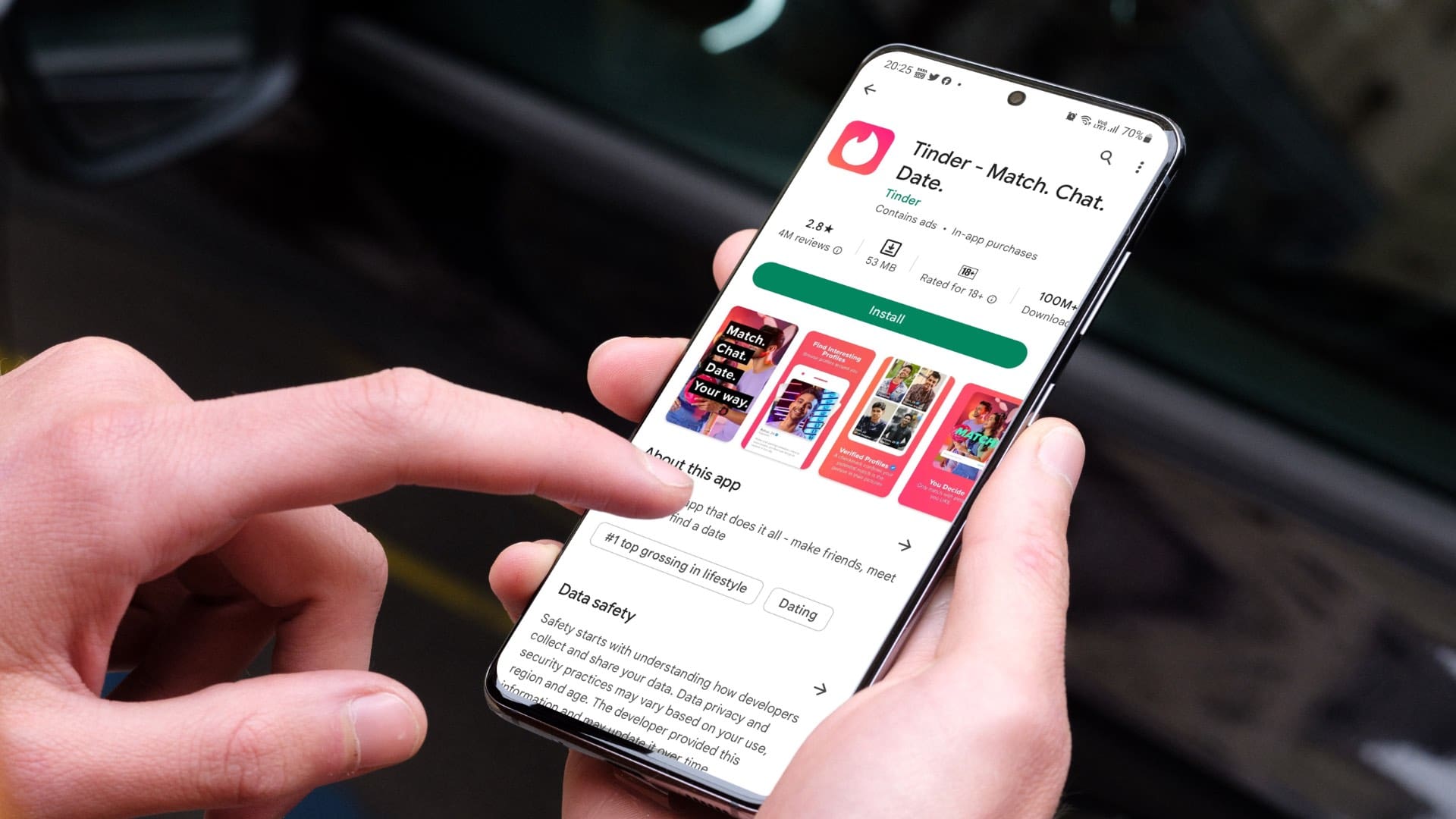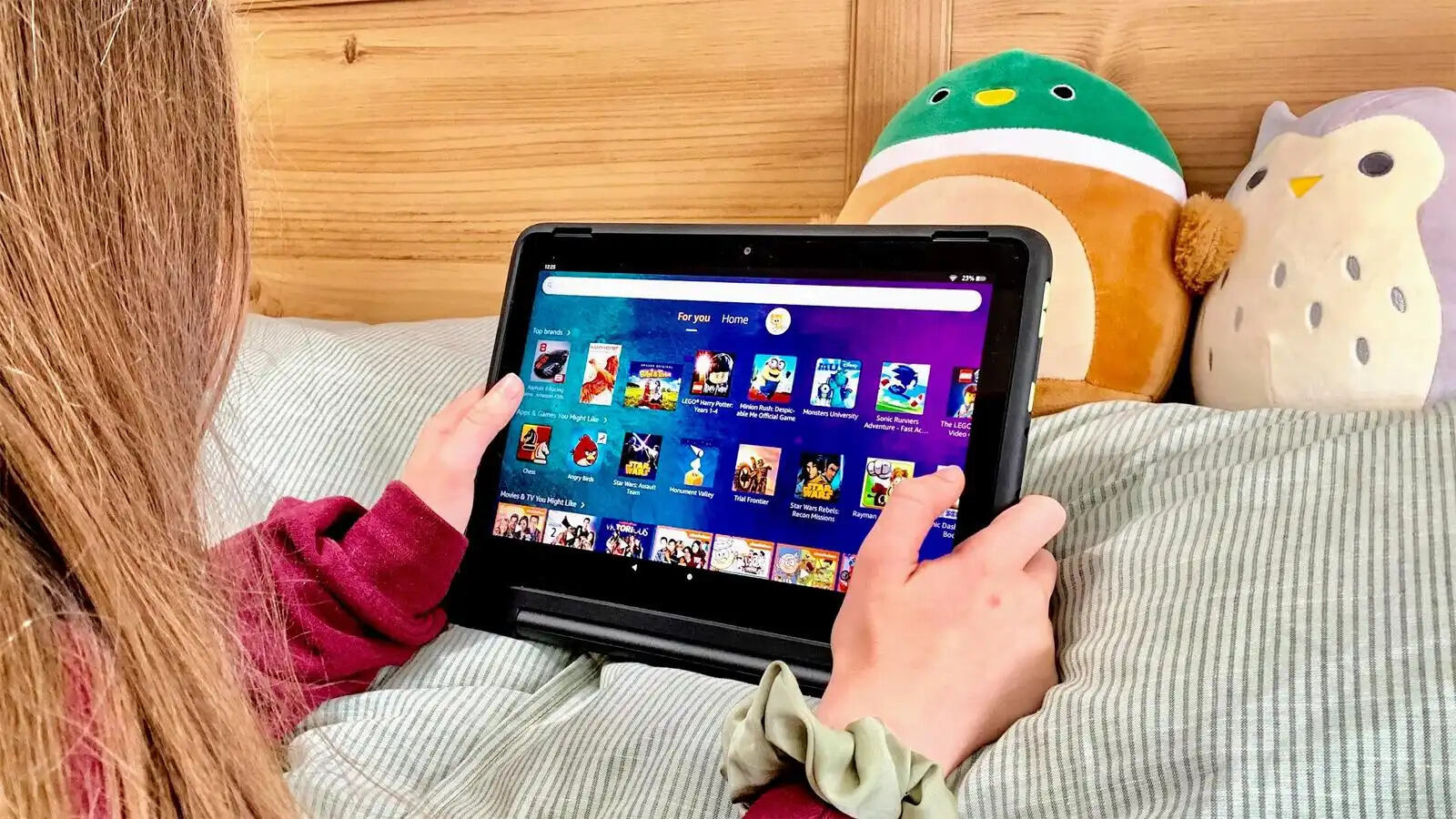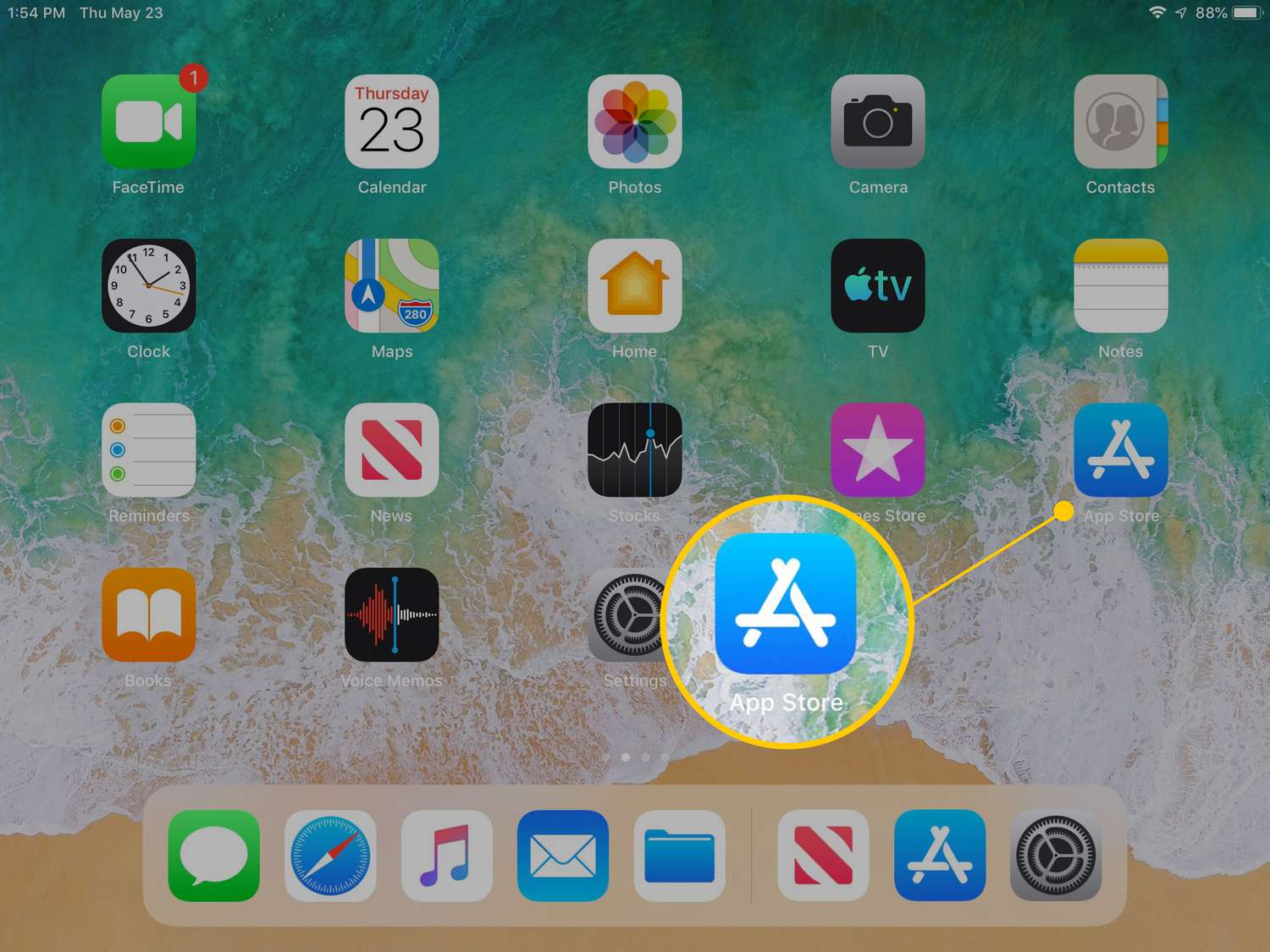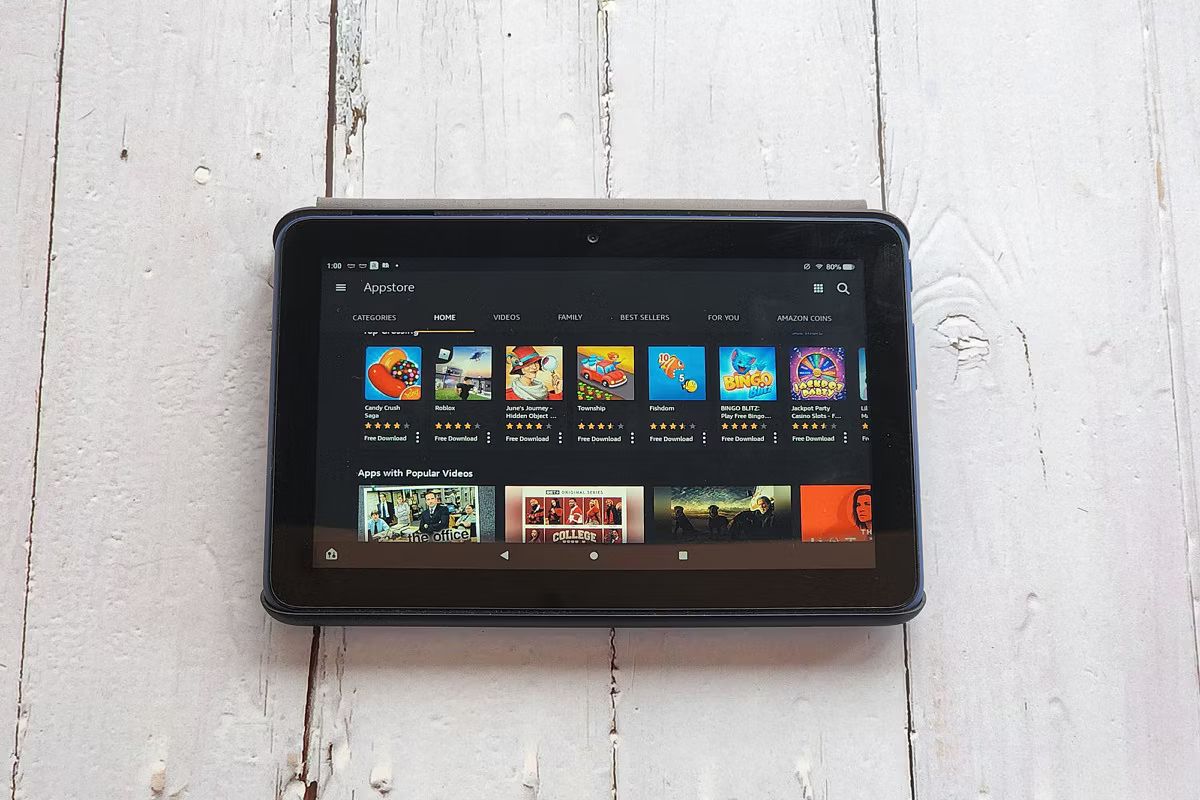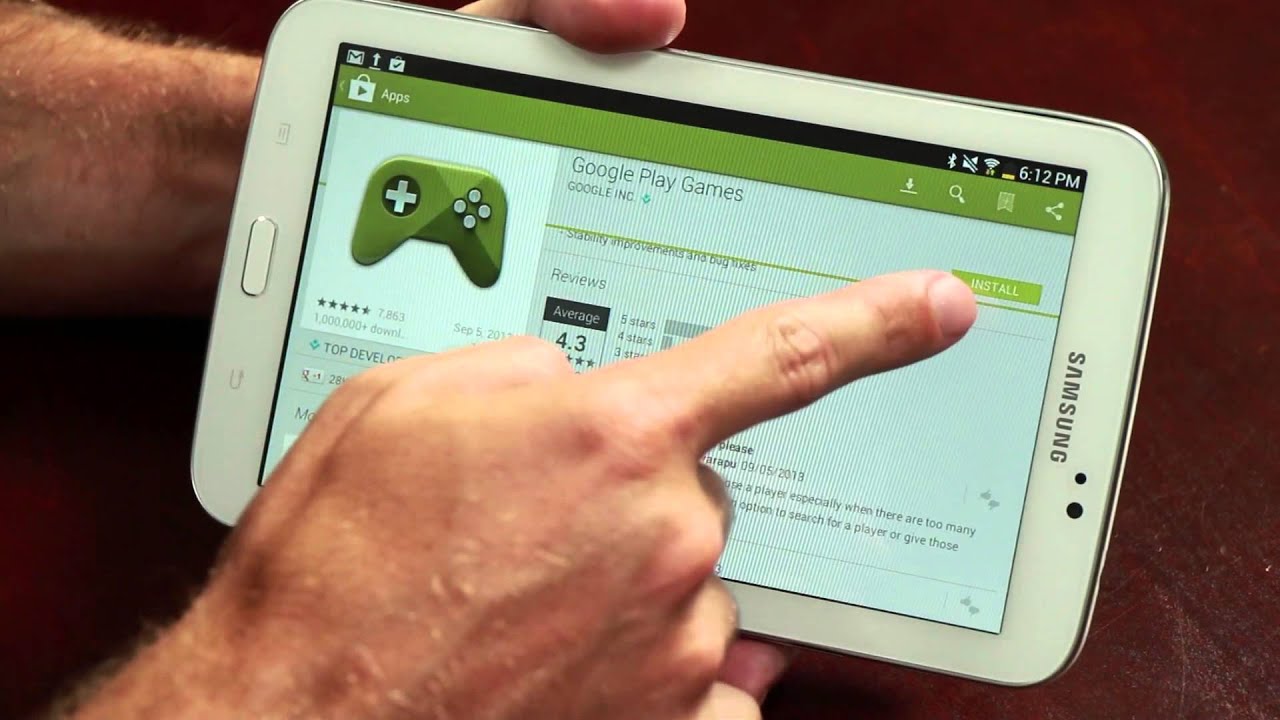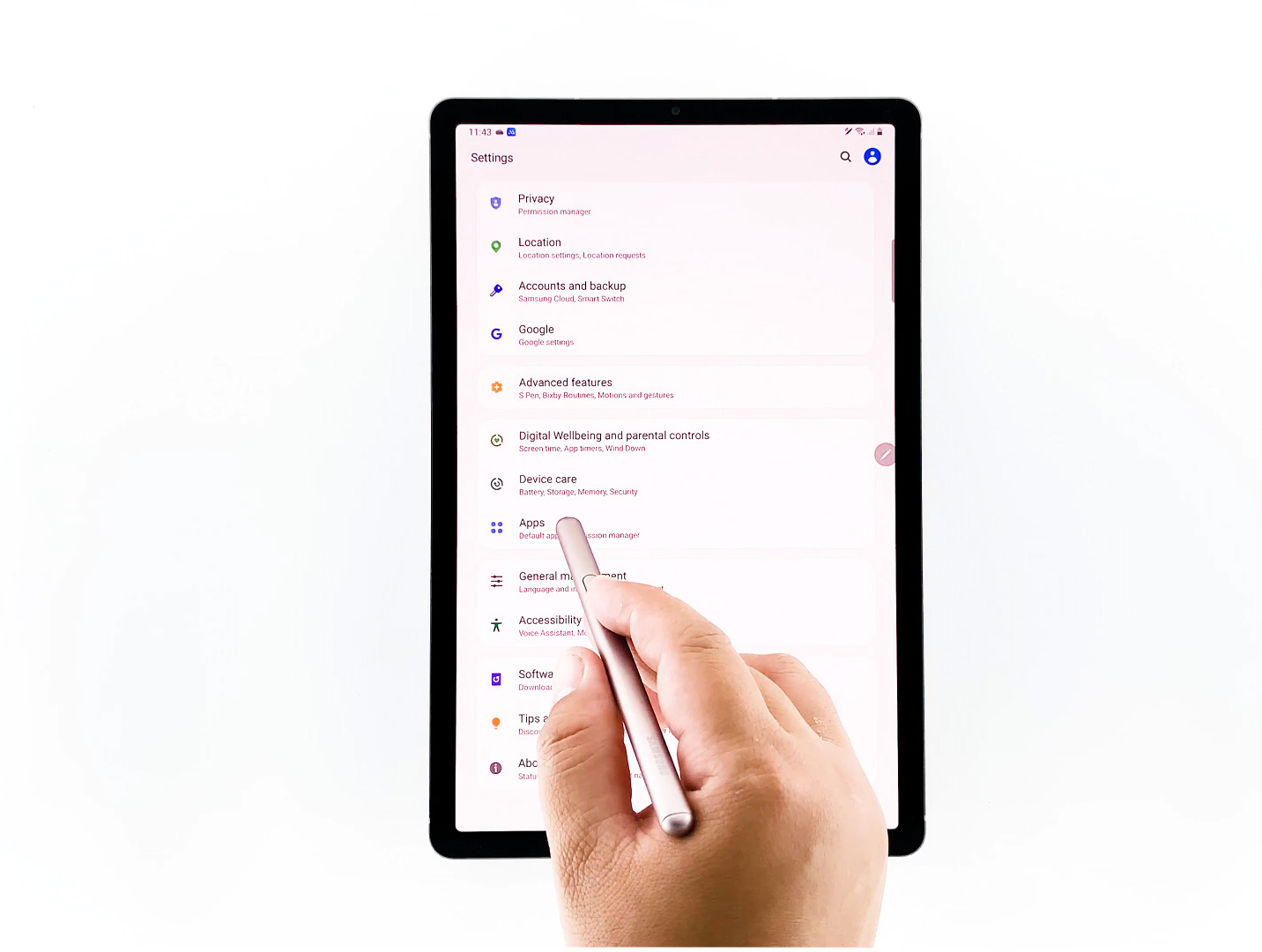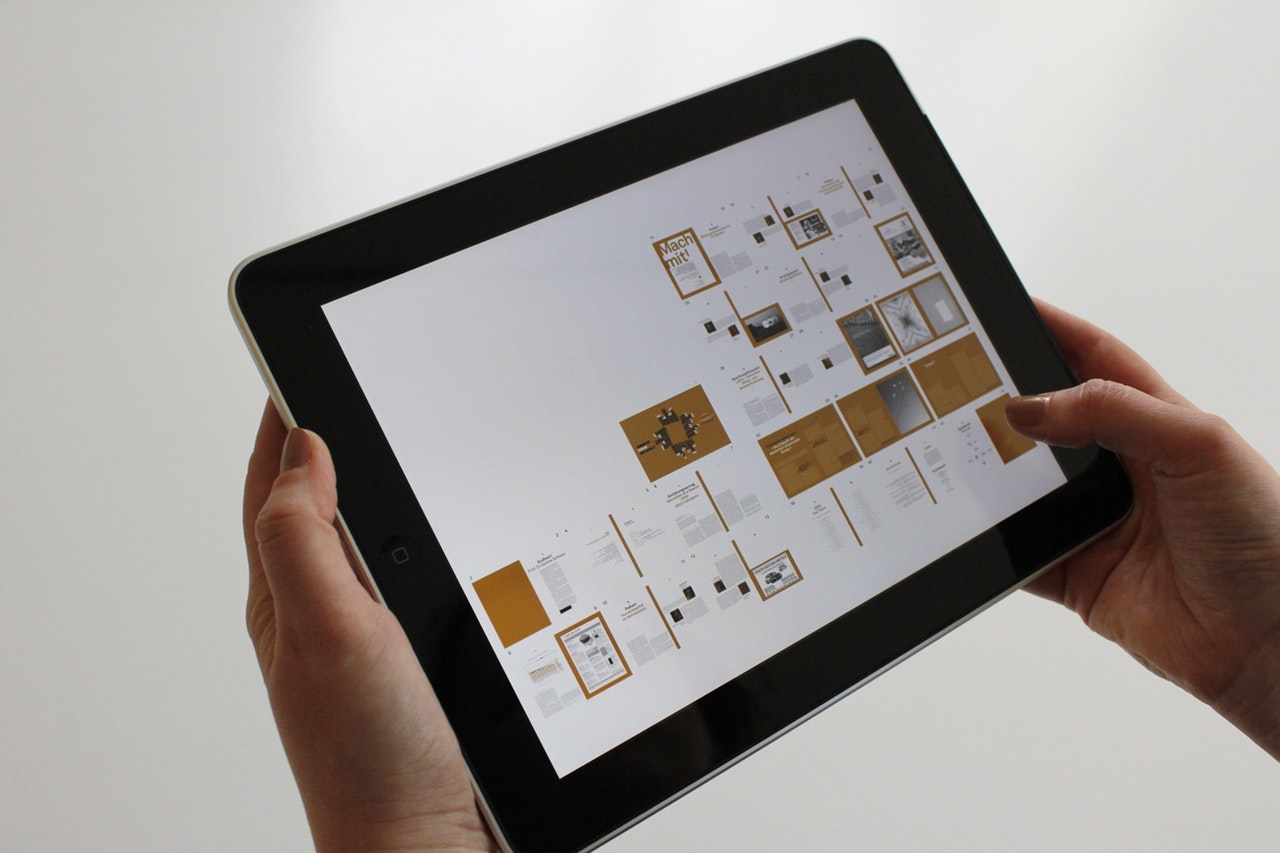Introduction
Having trouble downloading apps on your device can be frustrating, especially when you’re eager to try out new features or access essential tools. However, there are often solutions to these issues that you can try before giving up entirely. In this article, we will explore some common reasons why you may not be able to download apps and provide troubleshooting steps to help you get back on track.
When it comes to downloading apps, there can be various factors that contribute to the problem. It could be related to your internet connection, device settings, or even restrictions set by app developers or device manufacturers. By following the steps outlined in this guide, you can narrow down the potential causes and find a solution that suits your situation.
It’s important to note that the troubleshooting steps provided here are general guidelines and might not address every specific issue. However, they should give you a good starting point for resolving the problem.
So, if you’re ready to dive in and learn how to fix the issue of not being able to download apps, let’s get started with some common reasons and the corresponding troubleshooting steps!
Common Reasons for Not Being Able to Download Apps
If you find yourself unable to download apps on your device, it’s essential to understand the possible reasons behind this issue. By identifying the cause, you can take appropriate steps to resolve it. Here are some common reasons why you may be experiencing difficulties downloading apps:
- Internet Connection: One of the most common culprits is a poor or unstable internet connection. If your connection is weak or keeps dropping, it can disrupt the downloading process. Ensure that you have a stable internet connection before attempting to download any apps.
- Insufficient Storage Space: Another frequent cause is insufficient storage space on your device. If your device’s internal storage or the storage allocated for apps is full, you won’t be able to download any new apps. Delete unnecessary files or apps to free up space and try downloading again.
- Outdated Software: Using outdated software versions can also prevent app downloads. Developers often release updates to their apps that require the latest software on your device. Check for any available system updates and install them to ensure compatibility with the apps you want to download.
- Proxy or VPN Settings: If you are using a proxy server or a Virtual Private Network (VPN), it’s possible that these settings are interfering with the app download process. Disable any proxy or VPN settings temporarily and try downloading the app again.
- App Permissions: Some apps require specific permissions to be granted before they can be downloaded or installed. If you have disabled certain permissions on your device, it may prevent the app from being downloaded. Check the app’s permissions settings and ensure that the necessary permissions are enabled.
These are just a few of the common reasons why you may encounter difficulties when trying to download apps. By understanding these potential causes, you can now move on to the troubleshooting steps to fix the issue and resume downloading your desired apps.
Troubleshooting Steps
When you encounter issues with downloading apps on your device, it’s important to follow a systematic approach to troubleshoot and resolve the problem. Here are some steps you can take to fix the issue:
- Check your internet connection: Ensure that you have a stable and reliable internet connection. Connect to a different network or restart your router if necessary. Avoid downloading apps over cellular data if you are experiencing slow speeds or limited data.
- Clear cache and data: Clearing the cache and data of the app store or the specific app you’re trying to download can resolve many download-related issues. Go to the settings on your device, find the “Apps” or “Applications” section, locate the app in question, and select the options to clear cache and data.
- Restart your device: Sometimes, all it takes is a simple device restart to resolve the issue. Power off your device, wait for a few seconds, and then turn it back on.
- Check for software updates: Keeping your device’s software up to date is crucial for app compatibility and performance. Go to the settings on your device, find the “Software Update” or “System Updates” section, and check for any available updates. Install them if there are any pending updates.
- Disable VPN or proxy settings: If you are using a VPN or have proxy settings enabled, temporarily disable them and try downloading the app without them. Sometimes, these settings can interfere with the download process.
- Free up storage space: As mentioned earlier, insufficient storage space can prevent app downloads. Delete unnecessary files, apps, or media to free up storage on your device. This can be done through the settings or file management app on your device.
- Check app permissions: Verify that the app you’re trying to download has the necessary permissions enabled. Go to the settings on your device, find the “Apps” or “Applications” section, locate the app in question, and review its permissions. Enable any required permissions for the app to function properly.
- Reset app preferences: Resetting app preferences can help resolve issues related to app downloads. Go to the settings on your device, find the “Apps” or “Applications” section, tap on the three-dot menu or “More Options,” and select “Reset App Preferences.” This action will reset app permission settings, notification preferences, and default apps.
- Check for restrictions or parental controls: If you’re using a device with parental controls or restrictions enabled, ensure that app downloading is allowed. Adjust the settings if necessary to permit app downloads.
- Contact app support or device manufacturer: If you’ve tried all the above steps and are still unable to download apps, consider reaching out to the app’s support team or the manufacturer of your device for further assistance. They may have specific troubleshooting steps or insights into the issue you’re facing.
By following these troubleshooting steps, you should be able to overcome most download-related issues and successfully download apps on your device again. Remember to always keep your device software up to date and maintain sufficient storage space for optimal app performance.
Step 1: Check your internet connection
The first step in troubleshooting the issue of not being able to download apps is to check your internet connection. A stable and reliable internet connection is essential for downloading apps successfully. Here are some things you can do to ensure your internet connection is not causing the problem:
- Connect to a different network: Try switching to a different Wi-Fi network or connect to a different cellular data network. This will help determine if the problem is specific to your current network or if it persists across different networks.
- Restart your router: Sometimes, the issue can be resolved by simply restarting your router. Turn it off, wait for a few seconds, and then turn it back on. This can help refresh the connection and resolve any temporary network issues.
- Avoid downloading over cellular data: If you are experiencing slow internet speeds or have a limited data plan, it’s best to avoid downloading apps over cellular data. Use a Wi-Fi connection instead, as it tends to provide faster and more stable download speeds.
If you are still experiencing difficulties downloading apps after checking your internet connection, it is recommended to proceed to the next troubleshooting step to uncover any other potential causes.
Step 2: Clear cache and data
Clearing the cache and data of the app store or the specific app you’re trying to download can often resolve download-related issues. Accumulated cache and corrupt data can hinder the app download process, causing problems. Follow these steps to clear cache and data on your device:
- Open Settings: Go to the settings on your device. You can usually find the settings app on your home screen or in the app drawer.
- Find the Apps/Application Manager: Look for the “Apps” or “Application Manager” option in your device’s settings menu. This may vary slightly depending on your device and operating system.
- Locate the app: Scroll through the list of installed apps and find the app store or the specific app you’re having trouble downloading. Tap on it to access its settings.
- Clear cache: In the app’s settings, you should see an option to clear cache. Tap on it to remove any cached data associated with the app. This can help resolve any temporary issues with app downloads.
- Clear data: If clearing the cache doesn’t fix the problem, you can also try clearing the data for the app. Be aware that clearing the data may reset any personalized settings or login information associated with the app. Look for the option to clear data or storage and tap on it.
Once you have cleared the cache and data for the app, go back to the app store or the specific app you were trying to download and attempt the download again. This process should remove any potential obstacles caused by cache or corrupt data, allowing you to proceed with the app download. If you continue to experience difficulties, move on to the next troubleshooting step to uncover any other potential causes.
Step 3: Restart your device
Restarting your device is a simple yet effective troubleshooting step that can often resolve issues with downloading apps. It helps refresh the system and clear any temporary glitches that might be preventing app downloads. Here’s how you can restart your device:
- Power off your device: Press and hold the power button on your device until you see the power options menu.
- Tap on “Restart”: From the power options menu, select the “Restart” option. This will initiate the device restart process.
- Wait for the device to restart: Allow your device to shut down completely and then wait for a few seconds before turning it back on. This pause ensures that the device fully powers off before restarting.
- Power on your device: Press and hold the power button again to turn your device back on. Wait for it to boot up and reach the home screen.
Once your device has restarted, attempt to download the app again. Restarting your device can help resolve various technical issues that might be interfering with app downloads, such as background processes or system errors. If the problem persists, proceed to the next troubleshooting step to explore other potential causes.
Step 4: Check for software updates
Keeping your device’s software up to date is essential for app compatibility and performance. Developers often release updates to address bugs, enhance security, and improve overall functionality. If you’re unable to download apps, it’s worth checking for any available software updates on your device. Here’s how you can do it:
- Open Settings: Go to the settings on your device. You can typically find the settings app on your home screen or in the app drawer.
- Find “Software Update” or “System Updates”: Look for the “Software Update” or “System Updates” option in the settings menu. The location of this option may vary slightly depending on your device and operating system.
- Check for updates: Tap on the “Software Update” or “System Updates” option to check for any available updates for your device. Your device will connect to the server to verify if any updates are available.
- Install updates: If there are any pending software updates, follow the on-screen instructions to download and install them. This process may take some time, depending on the size of the update and your internet connection speed.
- Restart your device: After installing the updates, it’s advisable to restart your device. This allows the updates to take effect and ensures a smooth transition.
Once your device has restarted, go back to the app store or the specific app you were trying to download and attempt the download again. Updating your device’s software can address potential compatibility issues and provide a more stable environment for app downloads. If the problem persists after updating, move on to the next troubleshooting step to explore other potential causes.
Step 5: Disable VPN or proxy settings
If you have a VPN (Virtual Private Network) or proxy settings enabled on your device, they may be interfering with the app download process. Disabling these settings temporarily can help resolve the issue. Here’s how you can do it:
- Open Settings: Go to the settings on your device. You can typically find the settings app on your home screen or in the app drawer.
- Navigate to Network or Connections: Look for options like “Network,” “Connections,” or “Wi-Fi & Network” in the settings menu. The exact location of these options may vary depending on your device and operating system.
- Disable VPN: If you have a VPN enabled, find the VPN settings and disable the VPN connection. This might involve toggling a switch or selecting the “Disconnect” option.
- Disable Proxy: If you have proxy settings enabled, locate the proxy settings section and disable them. You may need to select the “None” or “No Proxy” option.
Once you have disabled the VPN or proxy settings, go back to the app store or the specific app you were trying to download and attempt the download again. Disabling these settings eliminates any potential conflicts between the app store and your network configuration. If the problem persists, proceed to the next troubleshooting step to explore other potential causes.
Step 6: Free up storage space
Insufficient storage space on your device can prevent app downloads. If your device’s internal storage or the storage allocated for apps is full, you won’t be able to download new apps. To resolve this issue, you need to free up storage space. Here’s how you can do it:
- Delete unnecessary files: Start by removing any unnecessary files, such as old photos, videos, or documents. Go through your file manager or gallery app and delete files that you no longer need. You can also transfer files to cloud storage or external devices to free up space.
- Clear app cache: Cached data can take up a significant amount of storage space. Clear the cache of individual apps by going to the settings on your device, selecting “Apps” or “Applications,” finding the app in question, and tapping on the option to clear its cache.
- Remove unused apps: Go through your list of installed apps and uninstall any that you no longer use. Unused apps not only take up storage space but can also affect device performance.
- Move apps to SD card: If your device supports it, you can move some apps from internal storage to an SD card. This can free up valuable space on your device. Go to the settings, select “Apps” or “Applications,” find the app you want to move, and check if there is an option to move it to the SD card.
After freeing up storage space on your device, try downloading the app again. This step ensures that you have enough space to accommodate the new app. If the problem persists, proceed to the next troubleshooting step to explore other potential causes.
Step 7: Check app permissions
Some apps require specific permissions to be granted before they can be downloaded or installed. If you’re unable to download an app, it’s worth checking the app permissions on your device. Here’s how you can do it:
- Open Settings: Go to the settings on your device. You can typically find the settings app on your home screen or in the app drawer.
- Select “Apps” or “Applications”: Look for the “Apps” or “Applications” option in the settings menu. The exact location may vary depending on your device and operating system.
- Find the app in question: Scroll through the list of installed apps and find the app you’re having trouble downloading. Tap on it to access its settings.
- Check app permissions: Look for the “Permissions” or “App Permissions” section within the app settings. Here, you will find a list of permissions that the app requires to function properly.
- Enable necessary permissions: Make sure that all the required permissions are enabled for the app. If any permissions are disabled, toggle them on to grant the app the necessary access it needs.
Once you have checked and enabled the app permissions, go back to the app store or the specific app you were trying to download and attempt the download again. Ensuring that the required permissions are enabled eliminates any issues related to permission restrictions and allows the app to be downloaded successfully. If the problem persists, move on to the next troubleshooting step to explore other potential causes.
Step 8: Reset app preferences
Resetting app preferences can help resolve issues related to app downloads. Sometimes, changes in app settings or preferences can hinder the download process. Resetting the app preferences can restore the default settings, allowing the app to function properly. Here’s how you can do it:
- Open Settings: Go to the settings on your device. You can typically find the settings app on your home screen or in the app drawer.
- Select “Apps” or “Applications”: Look for the “Apps” or “Applications” option in the settings menu. The exact location may vary depending on your device and operating system.
- Access app settings: Scroll through the list of installed apps and find the app you’re having trouble downloading. Tap on it to access its settings.
- Reset app preferences: Look for the “App Info” or “App Settings” option within the app settings. Tap on it to access additional settings for the app.
- Reset preferences: In the app settings, you should find the option to reset app preferences. This action will reset the app preferences, including any permission settings, notification preferences, and default apps.
After resetting the app preferences, go back to the app store or the specific app you were trying to download and attempt the download again. Resetting the app preferences can help resolve any conflicts or incorrect settings that were preventing the app from being downloaded. If the problem persists, move on to the next troubleshooting step to explore other potential causes.
Step 9: Check for restrictions or parental controls
If you’re unable to download apps, it’s possible that restrictions or parental control settings on your device are preventing the download. These settings are designed to limit certain activities on your device, including app downloads. Here’s how you can check for restrictions or parental controls:
- Open Settings: Go to the settings on your device. You can typically find the settings app on your home screen or in the app drawer.
- Find “Security” or “Privacy”: Look for options like “Security,” “Privacy,” or “Screen Time” in the settings menu. The location may vary depending on your device and operating system.
- Access restrictions or parental controls: Within the security or privacy settings, you should find the option for restrictions or parental controls. Tap on it to access the settings.
- Review settings: Check the restrictions or parental control settings to see if app downloads are allowed. Make sure that there are no restrictions or filters in place that are preventing the app download.
- Adjust settings if necessary: If there are restrictions or parental controls that are blocking app downloads, adjust the settings accordingly. Enable the necessary permissions or remove any restrictions that are preventing the download.
Once you have reviewed and adjusted the restrictions or parental control settings, go back to the app store or the specific app you were trying to download and attempt the download again. Checking and modifying these settings ensures that there are no restrictions hindering the app download process. If the problem persists, move on to the next troubleshooting step to explore other potential causes.
Step 10: Contact app support or device manufacturer
If you have followed all the previous troubleshooting steps and are still unable to download apps, it may be time to reach out to app support or the manufacturer of your device for further assistance. Both the app developers and device manufacturers have dedicated support channels to help users resolve issues with app downloads. Here’s how you can get in touch with them:
- Visit the app’s support website: Check if the app you are trying to download has a support website. Go to their website and look for a “Contact” or “Support” section. Fill out the contact form or reach out to them via the provided contact information.
- Search for app-specific forums: Find online forums or communities dedicated to the app you are having trouble with. Many apps have active user communities where you can ask questions and seek help from experienced users.
- Contact your device manufacturer: If the issue seems to be specific to your device, contact the manufacturer’s support team. Look for their official website or support hotline. Explain the problem and provide relevant details about your device and the app you’re trying to download.
- Provide detailed information: When contacting app support or the device manufacturer, be sure to provide as much information as possible about the issue. Include details such as the error message you’re receiving, any troubleshooting steps you’ve already taken, and the specific app or apps you’re having trouble downloading.
- Follow their instructions: Once you have contacted app support or the device manufacturer, they will guide you through any additional steps that may be necessary to resolve the issue. Follow their instructions closely and provide feedback on the results.
By reaching out to app support or the device manufacturer, you can benefit from their expertise and gain access to specialized solutions for your app download issue. They may have specific troubleshooting steps or insights that can help you resolve the problem. Remember, they are there to assist you and will likely do their best to get your app downloading successfully on your device.
Conclusion
Experiencing difficulties when trying to download apps can be frustrating, but with the right troubleshooting steps, you can often resolve the issue. In this article, we have explored common reasons why you may not be able to download apps and provided a comprehensive set of troubleshooting steps to help you overcome the problem.
We started by checking your internet connection and ensuring it’s stable. Then, we looked at clearing cache and data, restarting your device, checking for software updates, and disabling VPN or proxy settings that may be interfering with the download process. We also discussed the importance of freeing up storage space, checking app permissions, and resetting app preferences.
If you have exhausted all these troubleshooting steps and are still unable to download apps, it’s recommended to contact app support or the device manufacturer for further assistance. They have the knowledge and resources to provide specific guidance tailored to your situation.
Remember, it’s crucial to stay patient and thorough during the troubleshooting process. Each step can help eliminate potential causes and bring you closer to a solution. By following these troubleshooting steps, you can increase the likelihood of successfully downloading apps on your device.
Hopefully, with the information provided in this article, you will be able to overcome the issue of not being able to download apps and get back to enjoying new features and tools on your device.







